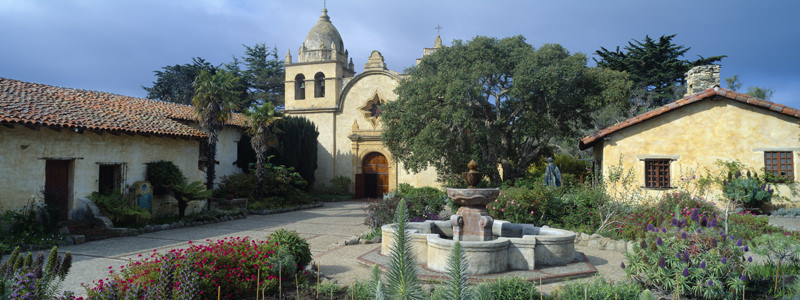American wine has always had ties to the old world. While the country does have a few indigenous grapes that have seen their fame come and go, for the most part, great American wine is made from grapes that didn’t originally grow on this continent. And while we’d like to think that the first grapes brought to the U.S. to make wine were the Cabernet Sauvignon, Merlot and Chardonnay that we’ve grown to love, in fact it was a grape that has all but faded from our memory, though at the time, despite the fact that the wine it made didn’t taste that great, it was a vital part of American life, especially in the west.
The Mission grape, named for it’s connection to catholic missionaries and clergy, was first brought to Mexico by Spanish missionaries in the 16th century. The vine cuttings were brought along to the new world not to ensure that booze was readily available, but to instead make sure that a vital part of Catholic mass, the communion, was still able to occur.
The wine produced from the grape for the purpose of communion was sickly sweet, with almost no acid to speak of and with no acid, that meant there was nothing to cut through the sweetness. Simply put, it didn’t create the greatest wine, but for religious observance it did the trick.
What missionaries didn’t expect to discover however was just how well the vines wound up growing in the climate of the new world. When the grape was finally brought across the border to the Southwestern United States, the vines thrived in the hot and dry California sun, and the plantings spread like wildfire. Even if the wine the grapes wound up making didn’t taste that great, it was still alcohol, and much of life in the wild west during that time period needed a bit of lubircating, so Mission wine did the trick.
But almost as quickly as it became popular, the grape disappeared. As new grapes that produced better tasting wines began to arrive to California from the old world the Mission grape became all but obsolete. Some areas of the state, especially around Santa Barbara and Los Angeles continued to plant the grape, but for the most part it was eclipsed by the better tasting Zinfandel and then ultimately the rock star Cabernet.
Mission’s story didn’t end there however, it just migrated. Following its demise in California, the grape headed to South America, specifically Chile, where it actually rivals Cabernet Sauvignon as the country’s most planted variety. In Chile, the grape is used to make cheap bulk wine blends that are then sold across the world, even in the U.S. So the next time you pick up a bottle of cheaper wine from Chile, you may just be drinking a wine which includes a grape that was once the king of the west.

